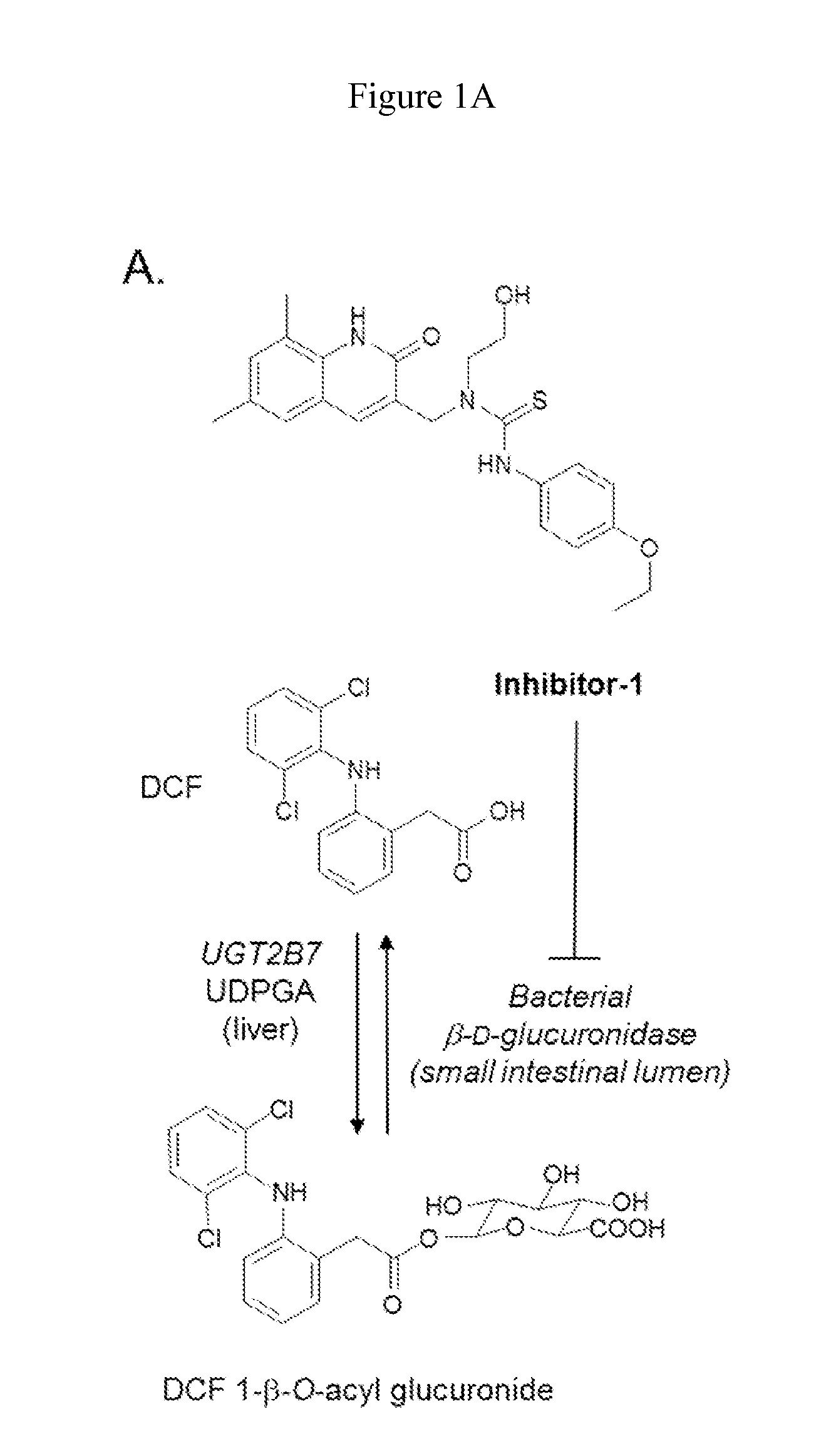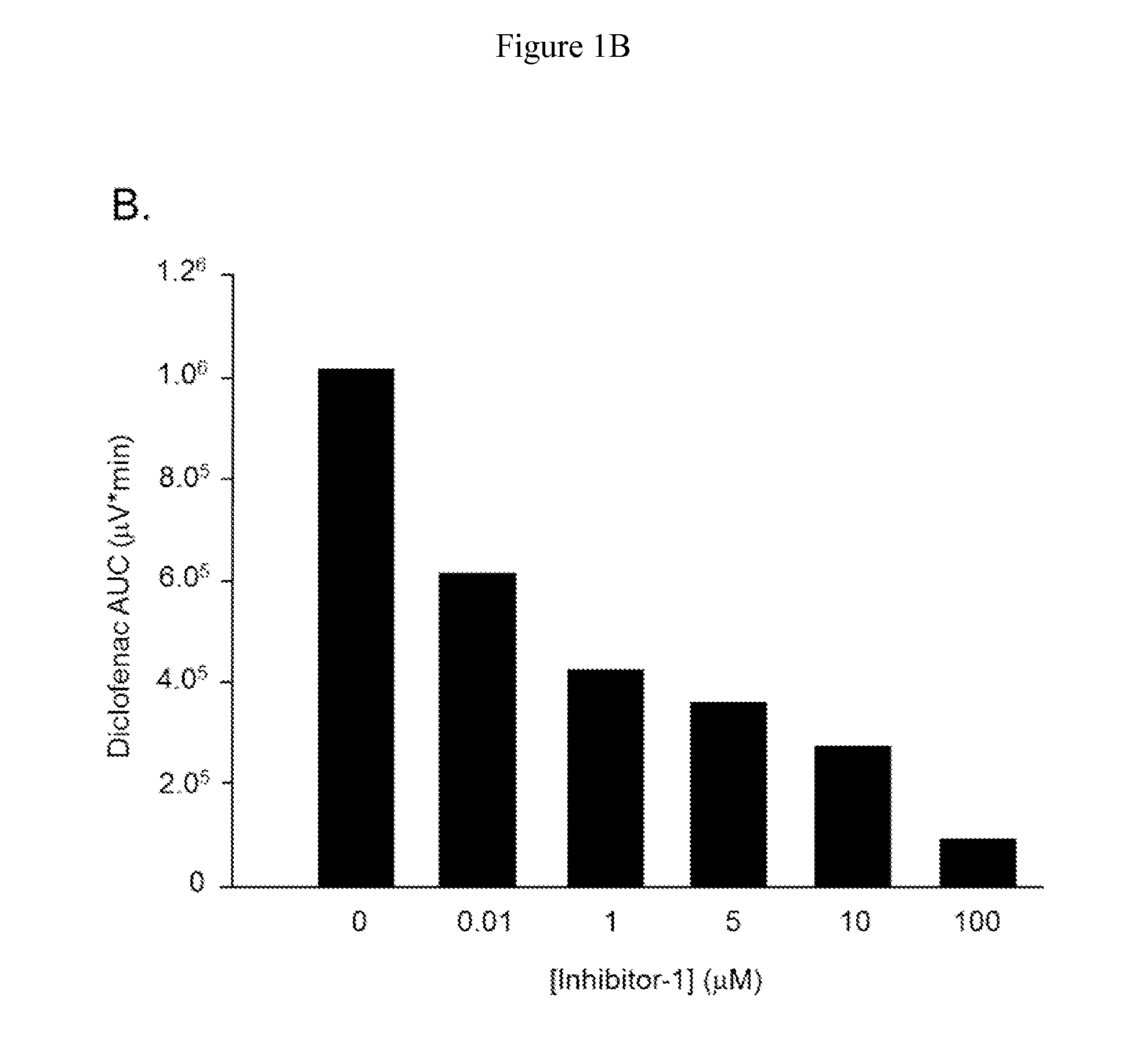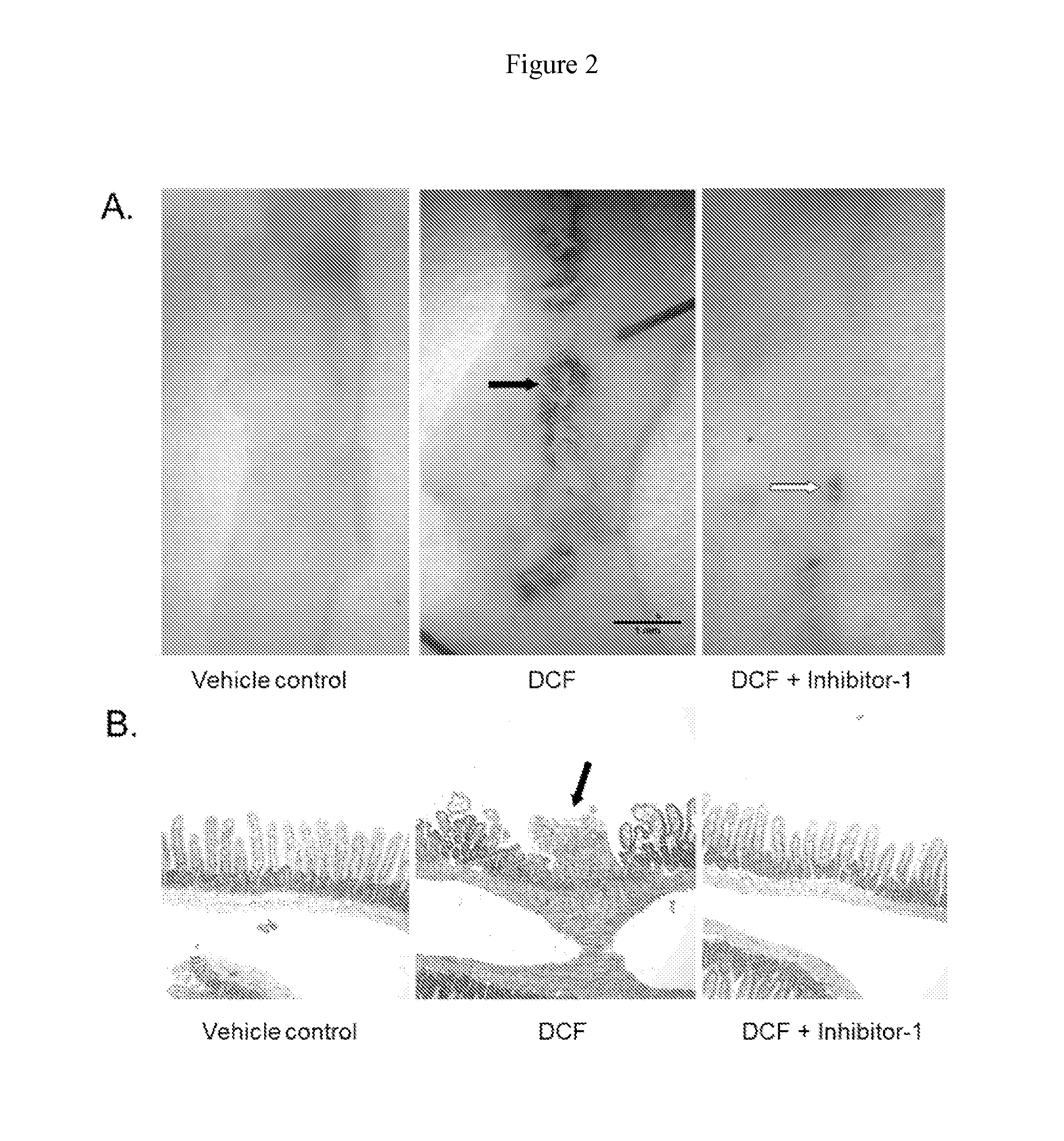Methods of Treating Adverse Intestinal Effects of Non-Steroidal Anti-Inflammatory Drugs
a non-steroidal anti-inflammatory and gastrointestinal disease technology, applied in the direction of biocide, heterocyclic compound active ingredients, drug compositions, etc., can solve the problems of nsaid enteropathy not being approved for treatment, selective cox, withdrawal from the market, etc., to increase future demand, increase life expectancy, and safe and effective treatment
- Summary
- Abstract
- Description
- Claims
- Application Information
AI Technical Summary
Benefits of technology
Problems solved by technology
Method used
Image
Examples
examples
[0060]The methods provided herein will be further understood by reference to the following non-limiting examples.
example i
Inh-1 is a Potent Inhibitor of E. coli β-D-Glucuronidase Diclofenac 1-β-O-Acyl Glucuronide Cleavage
[0061]It was first determined that diclofenac-aglycone (DCF-AG) is a substrate for bacterial β-glucuronidase in vitro by demonstrating that purified E. coli β-glucuronidase converted DCF-AG (various concentrations) to its aglycone in vitro (data not shown). Expression and purification of E. coli β-glucuronidase was conducted as previously described in Wallace et al., 2010. Diclofenac was obtained from Sigma (St. Louis, Mo.). Diclofenac-1-β-O-acyl glucuronide was obtained from LC Scientific, Inc. (Ontario, Canada). All chemicals were of the highest grade available.
[0062]To assess the inhibition characteristics of Inh-1, increasing concentrations of Inh-1 were added to the incubation system containing 4 mM DCF-AG Inh-1 ((6,8-dimethyl-2-oxo-1,2-dihydroquinolin-3-yl)methyl)-3-(4-ethoxyphenyl)-1-(2-hydroxyethyl)thiourea) as described in Wallace et al., 2010 was synthesized in house. DCF-AG ...
example ii
Inh-1 Protects Mice from Diclofenac-Induced Small Intestinal Ulceration
[0065]To determine the toxicologic consequences of inhibiting intestinal bacterial β-glucuronidase, mice were treated with a single ulcerogenic dose of DCF (60 mg / kg, intraperitoneal) with or without pretreatment with Inh-1 (10 μg / mouse, b.i.d., ×2 days) and the extent of drug-induced enteropathy was analyzed. Male C57BL / 6J mice were obtained from The Jackson Laboratory (Bar Harbor, Me.). The mice were acclimatized for three weeks before the experiments and were 10-12 weeks of age at the start of the experiments. The animals were kept on a 14:10-hour light:dark cycle. They received mouse chow (Teklad Global Rodent Diet, Harlan Laboratories, Boston, Mass.) and water ad libitum. All studies were approved by the Institutional Animal Care and Use Committee of the University of Connecticut. Diclofenac was dissolved in 10% (in PBS) Solutol HS-15 solution and administered intraperitoneally (60 mg / kg) in a volume of 10 μ...
PUM
| Property | Measurement | Unit |
|---|---|---|
| molecular weight | aaaaa | aaaaa |
| total volume | aaaaa | aaaaa |
| permeability | aaaaa | aaaaa |
Abstract
Description
Claims
Application Information
 Login to View More
Login to View More - R&D
- Intellectual Property
- Life Sciences
- Materials
- Tech Scout
- Unparalleled Data Quality
- Higher Quality Content
- 60% Fewer Hallucinations
Browse by: Latest US Patents, China's latest patents, Technical Efficacy Thesaurus, Application Domain, Technology Topic, Popular Technical Reports.
© 2025 PatSnap. All rights reserved.Legal|Privacy policy|Modern Slavery Act Transparency Statement|Sitemap|About US| Contact US: help@patsnap.com



